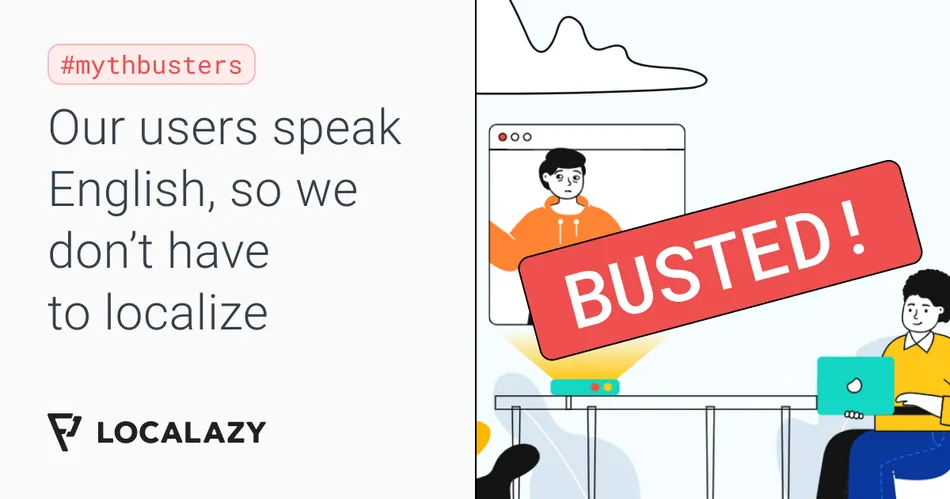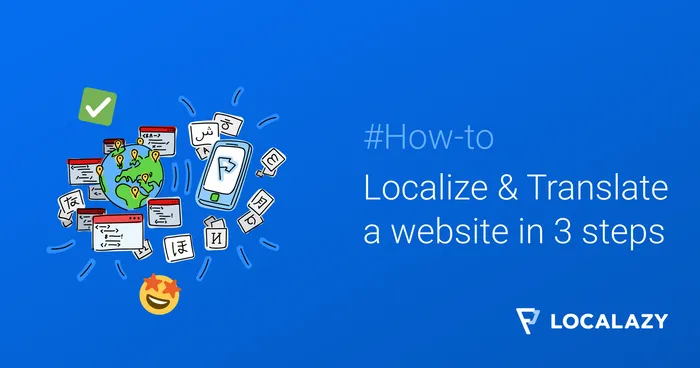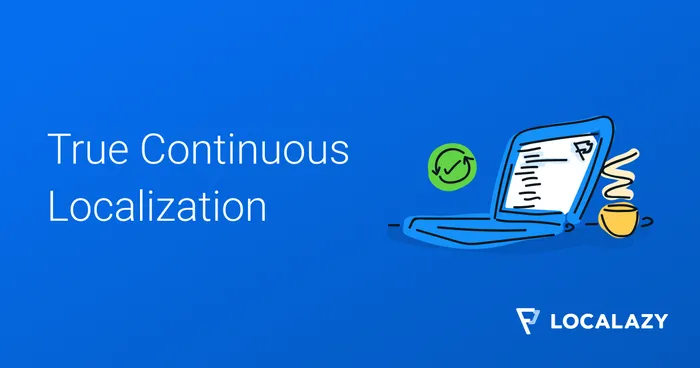🤔 "To localize or not to localize, that is the question."
Or at least, it's a question you should be asking if you're not already localizing your product or marketing content.
And the answer is simple - Yes!
Especially if you have business aspirations of taking your brand global or expanding your sales into overseas territories. Additionally, even if your business is strictly local, there will likely be multicultural neighbors, in other words - inhabitants with cultural and linguistic differences. If you are able to serve them, you will become a preferred service provider in comparison with your local competitors. 🚀
☝️ Thinking that "our customers or users speak English; therefore we don't need to localize" is a trap that many businesses fall into.
When you consider that only 4.5% of the world's population are native English speakers, with a further 19% speaking it as a second language, to varying levels of proficiency, it quickly becomes clear that "everybody speaks English" is a myth.
In other words, more than 75% of the global population doesn't speak any English at all! 😮
In this article, we'll dig a little deeper into the truth of how the language barriers affect sales and business growth, before setting out a strategy that you can apply to localize your product and marketing content to improve your SEO.
📈 The Impact of Language on Sales and Marketing 🔗
We're going to challenge the assumption that everybody speaks English these days, and you don't need to worry about localization. This is a myth that can be very damaging to any marketing efforts outside of native English-speaking countries and regions.
In 2021 it was estimated that there the total number of English speakers, both native speakers and those who speak it as a second language, stood at 1.35 billion out of a total global population of nearly 8 billion.
The fact that there are nearly 7 billion people around the world that don't speak any English blows the myth out of the water. But there are other factors beyond this that affect the success of global marketing efforts. 🌍
It may surprise you to find out that people who speak English as a second language are less likely to buy products that are not marketed in their native tongue.
A recent study carried out by the Common Sense Advisory revealed that 40% of non-native English speakers wouldn't buy something that is marketed in another language, and 65% prefer content that is produced in their native language.
The hesitance to make purchasing decisions based on non-native content is most noticeable when it comes to product reviews, with 73% preferring reviews that are written in their own language.
The preference for native language content isn't limited to B2C sales and marketing. B2B buyers also lean towards native content. For instance, for European countries such as France and Germany, using the native language as the language of business is a matter of national pride. 🤝
🎞️ The Importance of Localization - Case Study of Netflix 🔗
Successfully overcoming language barriers to reach a wider global audience involves developing a solid localization and multilingual SEO approach and strategy.
Take Netflix, for example. The multinational streaming service recently revealed that 90% of people that watched Dark, a TV series filmed in German, lived outside of Germany. One of the secrets of their success has been to offer global audiences a localized experience, with subtitles and dubbing in multiple languages.
More interestingly, the key factor to their global success has been the localization of their app and user interface (UI) to suit different countries. Netflix launched its streaming service in the USA in 2007, and by 2018 it had nearly 150 million subscribers worldwide, with more than half of those based overseas.

But one of the most significant contributors to Netflix's success has undoubtedly been their focus on international and multilingual SEO. To improve their organic search performance, Netflix took a three-pronged approach:
- 🔎 Multilingual keyword research - Including different languages within their content, meta-titles, and meta-descriptions, i.e., both on-page and off-page SEO. Netflix paid particular attention to Spanish, the second most natively spoken language worldwide, making it an attractive market to target.
- 📚 Localized content - Optimizing content to appeal to different nationalities has been a cornerstone of Netflix's approach, both in terms of SEO content and on their streaming platform.
- 🔧 Localized technical SEO - Netflix used a combination of geo-targeting and hreflang annotation to ensure that their platform and website appeared correctly on the different multinational versions of Google.
Read my previous article on How to Go Global with Multilingual SEO
🎖️ The Road to Localized Success 🔗
Another surprising fact is that 56% of non-native English speakers actively avoid English language websites altogether and spend the majority of their time on websites that are written in their native language.
So, it's pretty clear that localized content and multilingual SEO offer the best path to success when targeting overseas markets. But how do you go about achieving it?
You could follow the example of big, successful companies like Netflix, Facebook, Slack, Zoom, and others, that have created a highly defined strategy for localized content and SEO and put in the required action to make themselves stand out.
✔️ Conclusion 🔗
As with most things in life, it's usually best to enlist the help of experts that know how to develop a winning strategy and apply tools to help you execute it.
Here at Localazy, we provide the best localization and translation platform available to help you reach a wider audience with localization and optimize your content and SEO when branching out globally.
Start by signing up now and contact us to discuss your needs!




